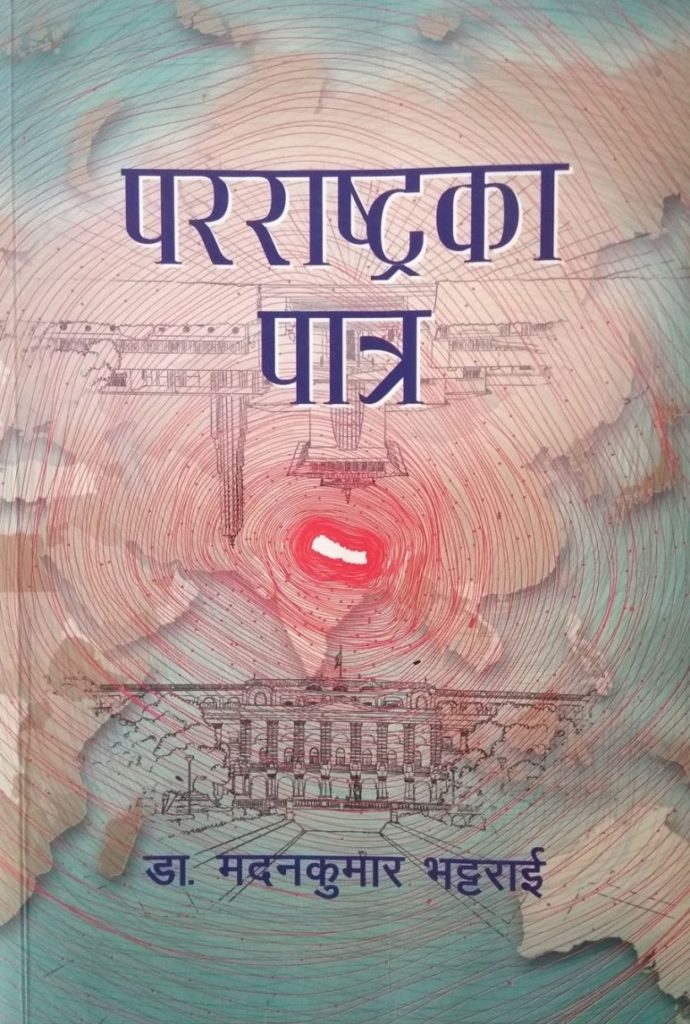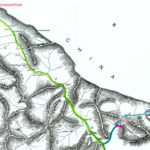By Dr. Madan Kumar Bhattarai
Publishers : Kitab Publishers Private Ltd., Kathmandu
Dr. Madan Bhattarai’s eye for detail is said to have noticed a discrepancy in numbers at a crucial water talk meet that saved the day for Nepal to the consternation of quarters who would rather have slipped the figures through. He has now produced a book on the conduct and conductors of Nepali foreign policy (as he has aptly subtitled it) so rich in detail on the subject matter that it may compare well with Bhim Bahadur Pandey’s works on Nepali administration and serve as a handy reference on the evolution of Nepali foreign policy, the foreign ministry and the people that helped shape it. It is precisely the details that make reviewing so readable a publication time consuming. Even the footnotes and addenda are so packed with information that that they need time for the information to sink. In addition, the seasoned diplomat’s carefully worded ‘diplomatese’ in describing people, places and events demands time to digest and admire. Many a personality in Nepali foreign policy upon whom he has chosen to comment are more than just acquaintances to this reviewer as well. The concurrence of this reviewer with his judgments cannot but provoke commends on accuracy.
Bhattarai’s is hardly the run of the mill autobiographical exercise at self-aggrandizement that proliferate the plethora of contemporary vernacular publications. It is a well researched empirical account of Nepali foreign policy and the painful exercise in institution building attested by the Ministry of Foreign Affairs that borders on the academic. The institution which evolved from Jaisi Kotha and Munshi Khana to MOFA is an infrastructure, nevertheless, for the pursuit of national objectives in foreign realms. This is definitely in the realms of politics and the personal recommendations reserved for the last chapter are but mild reminders that the instruments of foreign policy must be sharpened with professionalism in order for it to have purpose. Coming as it does from someone who spent decades in MOFA to serve as diplomat and secretary and, ultimately to top the assignment it seems, as advisor to the president, he has said as much of what is lacking in the field by prescribing what should be and that is his mastery.
Of course, such an undertaking on foreign policy cannot but touch upon Nepali politics and politicians. It is from these quarters that foreign policy is conceived. Here the author excels in picking up the prime actors, some taken up as chapters and some as paragraphs; some even dismissed as question marks. Bhattarai’s conclusions are so upto mark that this reviewer finds no bone to pick over his opinions especially even when his seasoned pen refrains from the run of the mill value judgments on personalities much discussed in politics and analytical accounts of their impact on policy. As he verified through talks with relevant actors, contemporary politics in the distribution and choice of portfolios subjugates the choice of foreign portfolio since it hardly serves the politician’s organizational purposes resulting also, as he implies, in the current slide of what should be a priority in Nepali policy making. This, by implication again, is in contrast to the high profile personalities in Nepali foreign affairs of previous years where the palace machinery and foreign ministry also served as continuum and memory and personnel bank. When saying this in whatever mild manner, the author is in concord with the general understanding that there is not only a slide in Nepali foreign policy personnel but also in foreign policy as such. This, however, is in stark contrast to the political need to showcase foreign policy domestically.
As technically sound as the book is, there is precious communication throughout. Of especial political interest will be the author’s conclusions on M.P. Koirala-B.P. Koirala relations, B.P.’s relation with king Mahendra and the author’s concluding lines on Girija Koirala: history has yet to judge whether he was the problem or part of the solution of Nepali politics. Coming as this does from Bhattarai on perhaps the only Nepali politician to see through all three – 1950, 1990 and 2006 —successful agitations in Nepal, this certainly carries meaning. Very few observers have ever mentioned as he does that non-participation at the UN conceptual meet at San Francisco also contributed to the collapse of the Rana regime. And although a book itself has biographied Rishikesh Shah posthumously, perhaps no better portrayal of Shah has ever been put to print as has Bhattarai who also comes up with keen analysis on Surya Prasad Upadhyay and the other personality he mentored with foreign policy effect, Surya Bahadur Thapa. Indeed, when so much is being written and talked about for so long on the differences between King Tribhuvan and his son King Mahendra, this author has even dared to beat the trend by stating that there were no differences by time of the father’s end. Saying so much by remarkable paucity of words does give the author much credit in its rarity.
To conclude, the book, as thorough as it is on the subject matter regarding foreign policy actors and structures has also delved in the process on relevant policy events to date equally thoroughly. One is tempted to suggest however that this reviewer would also have welcomed a mention in the book of the impact on Nepal’s Tibet ties after the Younghusband expedition at the turn of the century and also, some few years previous to that, what mechanism prompted the possibility of a group of select Nepalis in Japan for scholarship during he heydays of the British Raj. But again, the author is thorough on other events he has chosen to delve upon when he does so for which he deserves tremendous credit and congratulations.
– Reviewer SR



